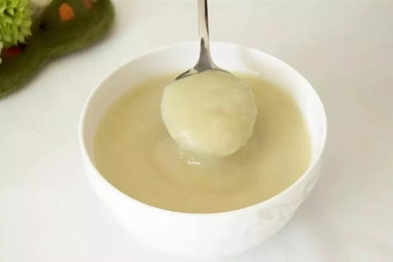Unlocking the Production Process of Infant Rice Cereal: A Blend of Nutrition and Precision
The production of infant rice cereal is a highly specialized field where food science meets stringent nutritional and safety standards. It is not merely about processing rice; it’s about creating a safe, easily digestible, and nutrient-fortified first food for a vulnerable population. Unlocking this process requires a meticulous approach at every stage.
Here are the key stages to understanding and mastering the production of infant rice cereal:
1. Raw Material Selection and Testing: The Foundation of Safety
The process begins long before the rice enters the production line. The selection of raw materials is the most critical step, as safety is paramount.
- Grain Selection: High-quality, low-protein white rice is typically chosen for its hypoallergenic properties and mild flavor. Brown rice is also used but requires more processing.
- Rigorous Testing: The incoming rice must be rigorously tested for a host of contaminants, including:
- Heavy Metals: Arsenic, cadmium, lead, and mercury must be below strict threshold levels. This often involves sourcing rice from specific regions with known low soil contamination.
- Pesticides: Ensuring residue levels are far below legal limits for infant food.
- Mycotoxins: Screening for molds like aflatoxin is essential.
- Microbiological Pathogens: Testing for Salmonella, E. coli, and other harmful bacteria is mandatory.
This stage sets the foundation for a safe product. There is no compromise here.
2. Precision Cooking and Drying: Unlocking Digestibility
Raw rice is difficult for infants to digest. The primary goal of this stage is to pre-cook (gelatinize) the rice starch, which breaks down its complex structure, making it soft, palatable, and easy for an infant’s immature digestive system to process.
- Hydrothermal Treatment: The rice is subjected to steam and pressure in a cooker. This hydrates the grains and fully gelatinizes the starch.
- Drying: The cooked, moist rice must be carefully dried to a precise moisture level to make it suitable for milling. Drum drying or hot-air drying are common methods. Precise control prevents over- or under-drying, which affects final texture and shelf life.
This process effectively “pre-digests” the rice, minimizing the work an infant’s gut has to do.
3. Milling and Particle Size Control: Achieving the Perfect Texture
The dried, cooked rice is now milled into a fine powder. The particle size is not arbitrary; it is carefully controlled to achieve the desired consistency when mixed with water or formula.
- Fine Milling: Industrial mills grind the rice into a very fine, silky powder.
- Sifting: The powder is passed through fine mesh sifters to ensure uniformity. A consistent particle size prevents a gritty texture and ensures the product dissolves smoothly without clumping.
The result is a base powder with the classic smooth texture expected of infant cereal.
4. Nutrient Fortification: Beyond Basic Nutrition
Plain rice powder provides energy but is insufficient in key nutrients. Fortification is what transforms it into a nutritionally complete food designed to support infant growth and development.
- Key Nutrients Added:
- Iron: This is the most crucial addition, as iron stores deplete around 6 months of age. Infant cereal is a primary dietary source of iron.
- Zinc: Supports immune function and growth.
- Calcium & Vitamin D: Critical for bone development.
- B Vitamins: Including B1 (Thiamine), which is essential for energy metabolism.
- Precision Blending: Micronutrients are added in precise, minute quantities using highly accurate dosing systems. The mixture is then homogenized to ensure every single serving contains the exact specified level of each nutrient.
This step is where the product is truly engineered to meet the specific nutritional needs of infants.
5. Packaging and Quality Assurance: Ensuring Shelf Stability and Safety
The final product is extremely vulnerable to moisture and oxygen, which can degrade its quality and nutritional value. Packaging is designed to protect it.
- Aseptic Packaging or Modified Atmosphere Packaging (MAP): The cereal is packed in a nitrogen-flushed environment. Nitrogen displaces oxygen inside the package, preventing oxidation (rancidity) and protecting the sensitive added vitamins. This also creates a cushion, preventing powder compaction during shipping.
- Final Quality Checks: Sealed containers are checked for seal integrity. Representative samples from each batch are subjected to final laboratory analysis to confirm:
- Nutritional content meets the label claims.
- Microbiological safety standards are met.
- Moisture content is correct for shelf stability.
- The product reconstitutes correctly with water.
Conclusion: A Process of Trust and Science
Unlocking the production of infant rice cereal reveals a process built on a triad of non-negotiable principles: safety, nutrition, and digestibility. It is a perfect example of how food technology serves a vital public health need. From the stringent testing of raw materials to the precise addition of life-supporting nutrients, every step is controlled, measured, and validated to ensure that the final product is not just food, but a trusted tool for supporting the healthy growth of the next generation.








